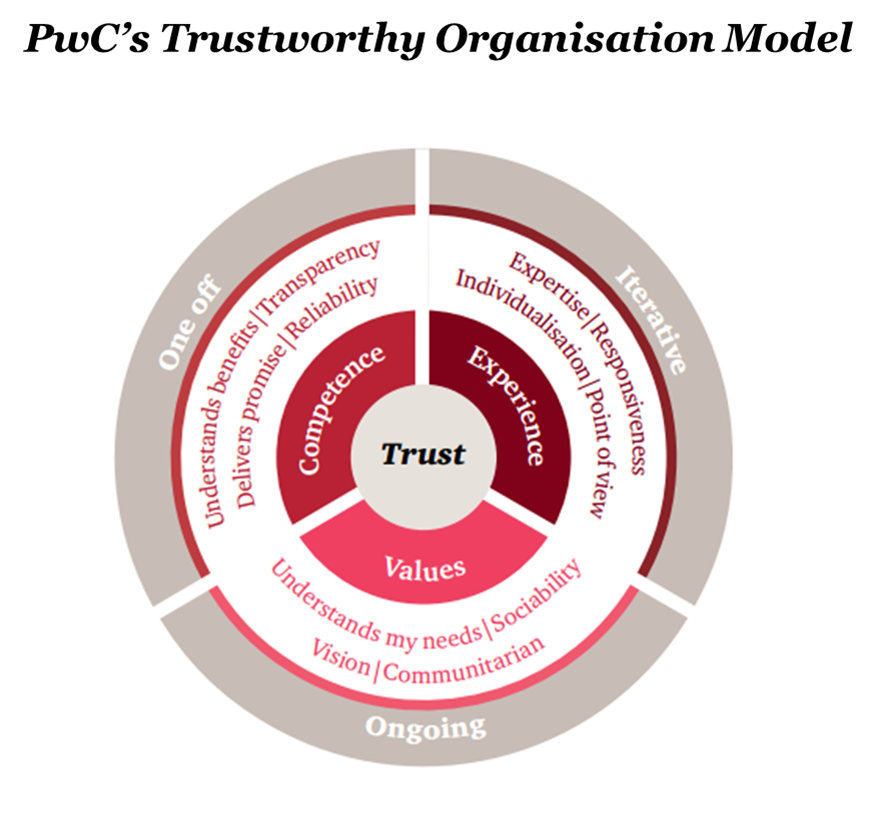Measuring trustworthiness
Can we measure trustworthiness?
It is possible to measure and then proactively manage your trust levels. We did so by creating Trust Profiles for our Building Trust Awards finalists. These trust profiles are a significant part of Pwc's Trustworthy Organisation framework, which tells us there are three different types of trust that consumers and investors look for:
1. Competence trust - does the organisation do what it says it will do?
2. Experience trust - over time, does the organisation continue to do what it says it will do?
3. Values trust - does the organisation have the right sort of values that I expect it to have?
Most organisations undertake some kind of stakeholder analysis, such as calculating a ‘net promoter score’ – but only look at single metrics in isolation.
A more holistic view of trust – integrating a number of different measures – enables organisations to interpret their current situation more accurately; pinpoint previously unidentified linkages between stakeholders which affect their overall trust levels; and create and execute a strategy focused on the right priorities.

We believe our model for understanding what drives trustworthiness is different from existing trust frameworks and measures, for three main reasons:
1. We treat trust as a multidimensional concept, enabling us to create a more holistic picture encompassing all the organisation’s stakeholders, not just one group at a time.
2. We succeed in modelling these various relationships within the same model for all stakeholders, so organisations have one frame of reference, not multiple sources.
3. We have found that the same three types of trust operate for all key stakeholders and most types of organisations, so we can work with a single concept of a trustworthy organisation rather than many.
Why trust profiles?
Trust is the lens through which customers and investors identify with an organisation’s culture and assess its ability to deliver against its strategic goals. Where annual reports explain an organisation’s view of the world, trust profiles explain the world’s view of the organisation. Together, they give a more rounded understanding of an organisation.
A high degree of trust is why:
1. New customers will try an organisation and old customers will return
2. Investors will want to purchase an organisation’s equity
Trust is an asset – It’s hard to win but easy to lose
Trust isn't just a nice-to-have - it is a tangible asset for business. One that has clear benefits, and equally strong consequences when abused.
1. Until a crisis hits, organisations are unaware of how trusted they are
2. They focus on trust only when there is a need to repair – few use trust as an asset to add value to their business
3. In the PwC 2015 Global CEO survey, half of respondents cited lack of trust as a barrier to their growth prospect.














